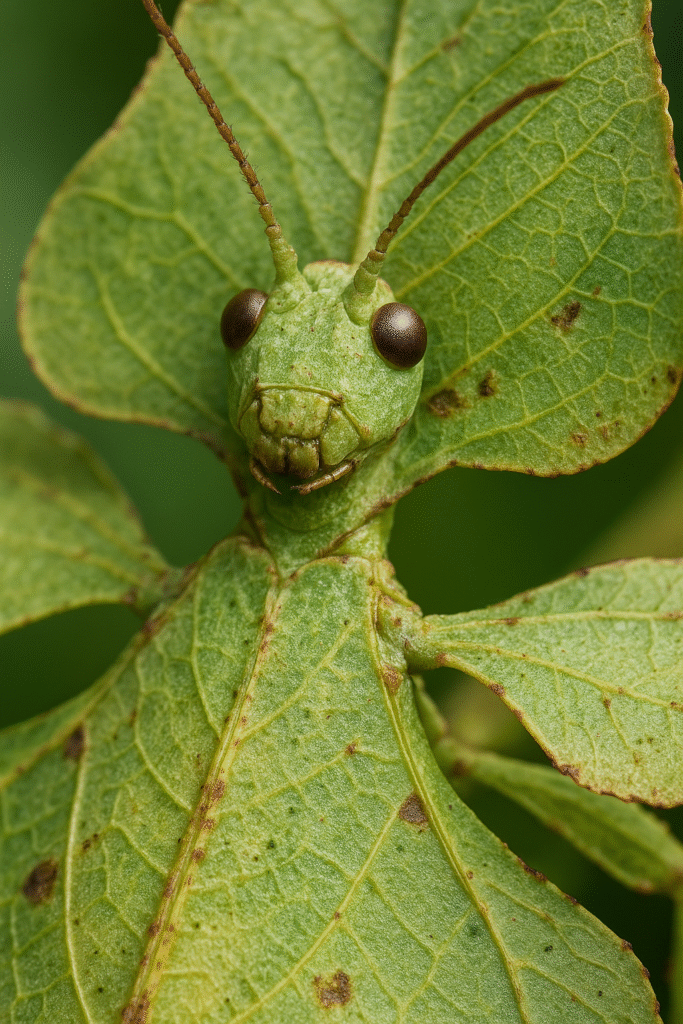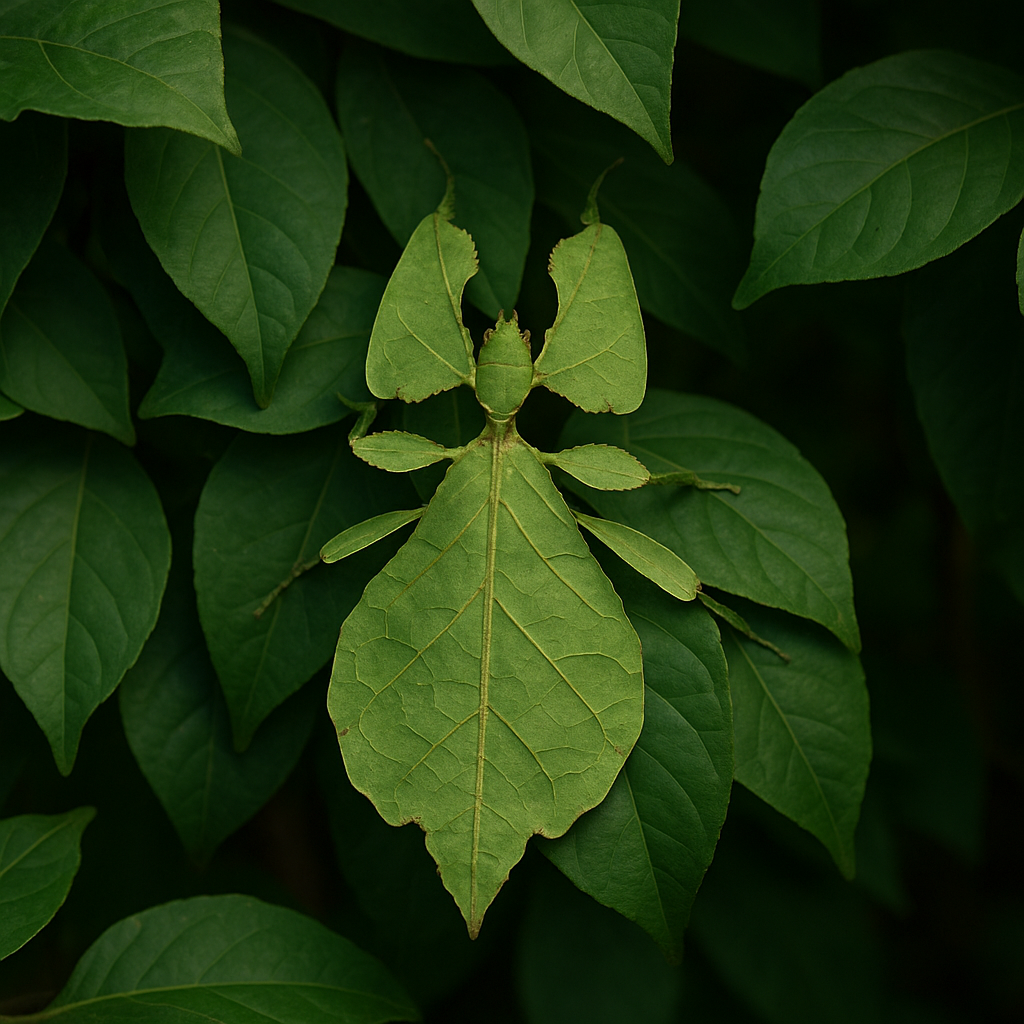In the dim light of the rainforest floor, where shadows sway with every whisper of wind, lies one of nature’s most convincing illusions. A creature that does not roar, sting, or strike, but survives by vanishing—by becoming something it is not. The leaf insect, member of the family Phylliidae, is among evolution’s finest tricksters, sculpted not with claws or fangs, but with mimicry so perfect that even the sharpest eyes falter.

The Anatomy of Disguise
The leaf insect does not merely resemble a leaf—it is a leaf in every discernible way. Its wings mirror venation with uncanny detail, each vein branching like the vascular tissue of real foliage. Its legs, lobed and serrated, extend outward like chewed edges of a battered leaf. Some species even develop false blemishes: simulated fungal spots or insect bites. When the insect moves, it sways gently side to side, mimicking a leaf disturbed by passing wind.
Predators—birds, lizards, even humans—overlook it, deceived by an artistry millions of years in the making. Unlike the orchid mantis, which mimics to lure prey, the leaf insect’s camouflage is entirely defensive. It is an organism that wins by being forgotten.
A Silent Architect of the Forest
Though nearly invisible, leaf insects play their role in the rainforest symphony. They are herbivores, nibbling primarily on guava, mango, and other tropical plants. In turn, they serve as sustenance for those predators capable of piercing the veil. Their presence signals something profound: ecosystems thrive not only through power and aggression, but through subtlety and deception.

Their eggs, dropped to the forest floor, mimic seeds. Some even bear ridges and textures that encourage ants to carry them underground, inadvertently providing the perfect nursery. It is a cycle of life intertwined with mimicry at every stage.
Myths and Symbolism
Across Southeast Asia, where leaf insects are most abundant, they carry an aura of quiet reverence. In folklore, they are often seen as spirits of the forest—guardians that hide in plain sight to test the perception of humans. Some traditions believe spotting one foretells transformation or the need to look deeper into life’s illusions.
In Western natural history, they became curiosities—displayed in Victorian cabinets, studied under glass domes. For early explorers, their existence was proof that nature was not merely mechanical, but playful, imaginative, and deeply mysterious.
Fragility in a Changing World
But mimicry cannot conceal them from chainsaws. As deforestation spreads across Southeast Asia and Oceania, the leaf insect’s home narrows. Many species are now listed as vulnerable, their populations fragmented by agriculture and logging. Ironically, their beauty—once their shield—has also become their vulnerability. Collectors prize them, harvesting them for trade, further reducing wild numbers.
The Lesson of the Leaf
The leaf insect stands as a paradox: fragile, passive, easily destroyed, yet a masterpiece of endurance, having persisted for tens of millions of years. Its survival is not built on violence or dominance, but on patience and illusion. In its stillness, it teaches us that existence is not only about being seen, but about being hidden well enough to endure.

In a time when humanity clamors for attention and noise, the leaf insect whispers another path: survival through humility, resilience through invisibility.
It is not just a bug. It is a living metaphor.
A leaf that walks, reminding us that in the deepest forests, truth and illusion are one and the same.


Reply